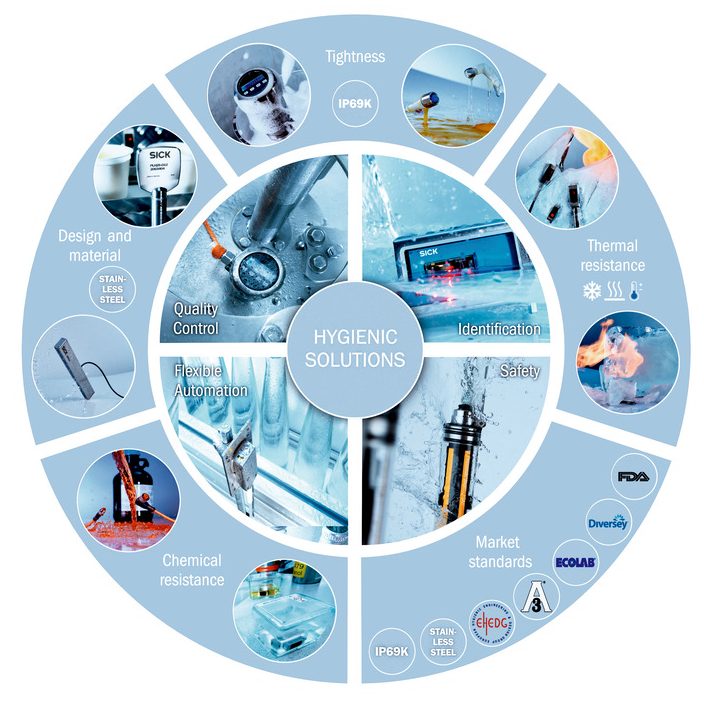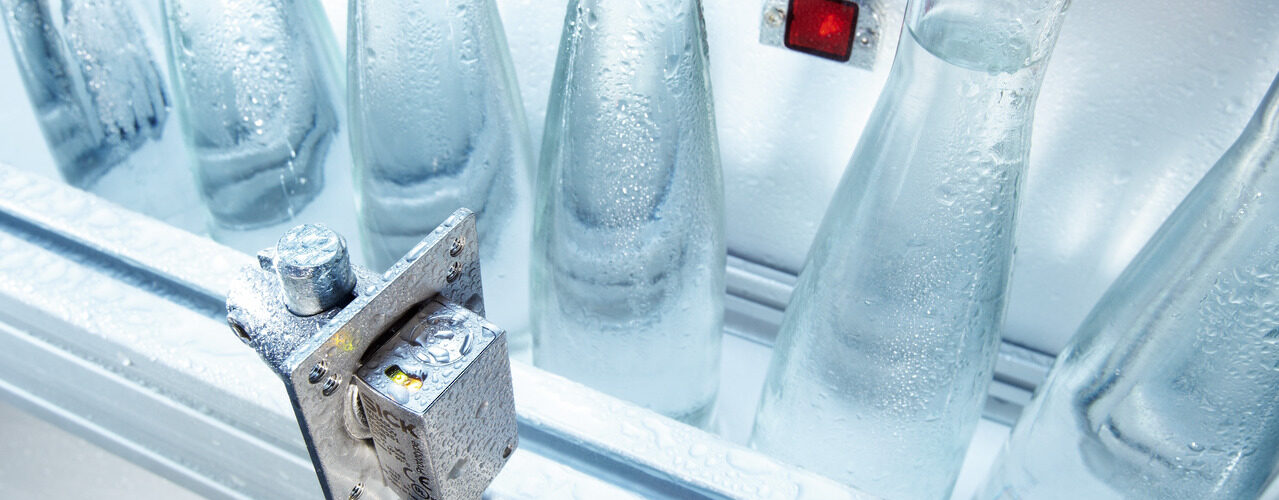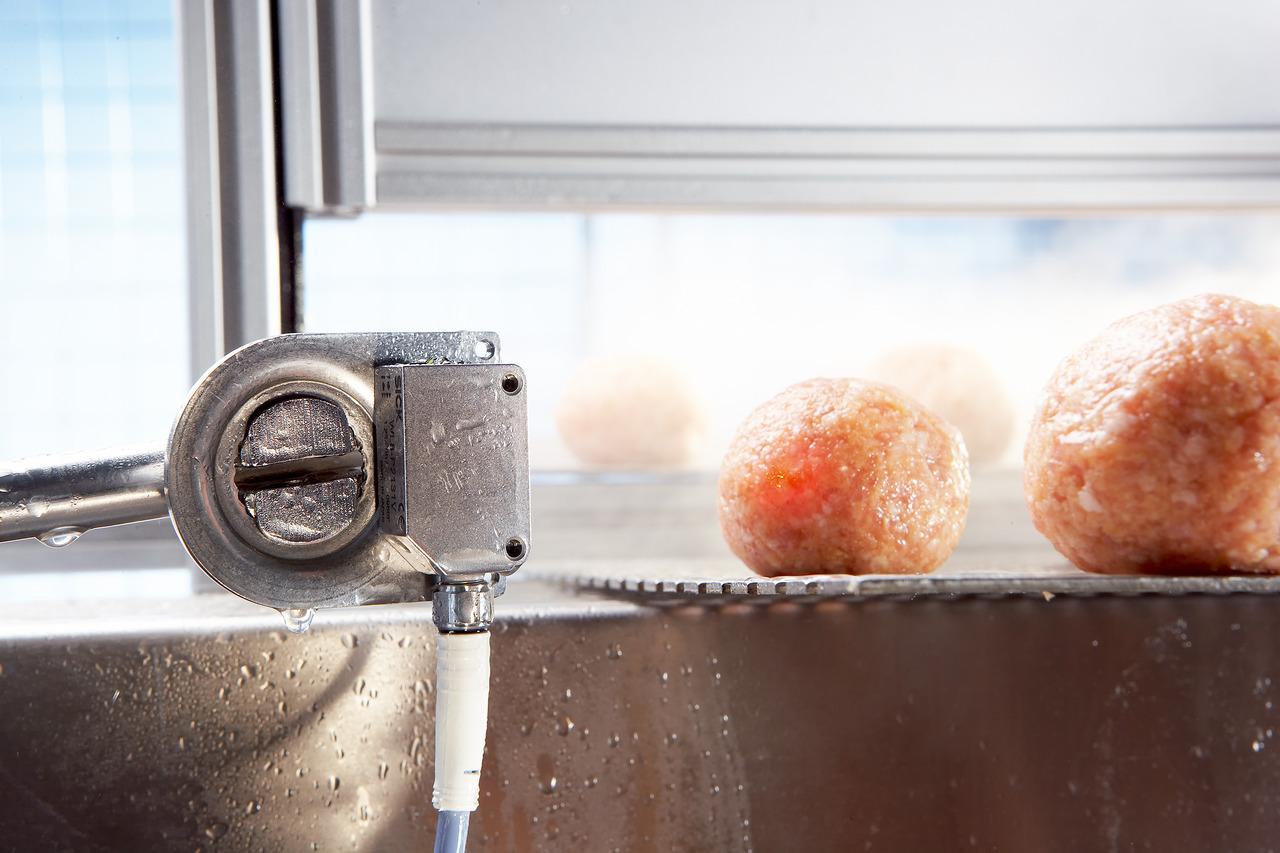Stainless steel sensors from SICK provide reliable and safe to minimize contamination risks
Within food production, bacterial contamination in the production, transport, and packaging processes can increase the risk for product recalls and other issues related to consumer health. A hygienic system design – in particular hygienic automation components – can minimize the contamination risks for products and communication risks for manufacturers. Germs and bacteria do not stand a chance against stainless-steel sensors and system solutions from SICK.
Exceptional Performance in Stainless Steel
Stainless-steel sensors from SICK deliver exceptional performance combined with compact dimensions, chemical and thermal material resistance, and lasting impermeability. All opto-sensory device types in the photoelectric sensor product families are also available in stainless-steel versions, this includes energetic photoelectric proximity sensors, photoelectric proximity sensors with background suppression, through-beam photoelectric sensors, and photoelectric retro-reflective sensors.
The stainless-steel sensor portfolio from SICK offers suitable solutions for safety technology tasks, the identification of products and containers, position monitoring and path measurement, pressure, temperature, and level measurement, or the inspection of packaging and its contents. These solutions offer the highest level of process reliability for the manufacturer and maximum product safety for the consumer.
At the same time, they ensure reliable functioning and consistently high levels of availability even under the harshest application conditions – because the automation tasks must not impact negatively on the hygienic design.

Product contamination: Three hazard zones in practical applications
Hygiene-compliant sensors shine not only on account of their stainless-steel housing, but also because of numerous other measures that guarantee the best possible chemical and thermal resistance and impermeability.
The machines and plants in hygiene-critical productions can be divided into three hazard zones, with corresponding consequences for the components that are to be used there.
Zone C: No Product Contact
Zone C is the non-food area of a machine where sensors can be protected by covers or mounted in such a way that they do not come into contact with food. Standard sensors can be used in this zone.
Zone B: Product Contact
Zone B is the area of a machine where external surfaces and plant components are cleaned with cleaning agents and disinfectants. Stainless-steel sensors and components in a washdown design are ideal solutions in this case. They offer the required robustness and are designed so that cleaning and disinfection can run off, leaving as little residue as possible.
Hygienic sensors are constructed in such a way that they can be used in direct contact with foods. Machines and systems that have been hygienically designed provide no, or hardly any surfaces on which product deposits can build up. Fewer buildups of product deposits mean less cleaning, in turn reducing the amount of detergent, water, and energy required. Plant availability is increased as a result of shorter cleaning process times – this is a real economic benefit, particularly if products are changed frequently.
In addition, washdown indicates that the splash zone of a machine can be wet-cleaned easily and quickly – and with this type of cleaning, there will be very few or no residues (food, cleaning agents, or water) left on the surfaces. Sensors in the splash zone must therefore be rugged when exposed to cleaning agents and high-pressure cleaning.
Zone A: Hygiene Compliant
Sensors used in Zone A – where they are in the immediate vicinity of the product – also undergo extremely demanding cleaning and disinfection processes. In addition, they must also meet special hygiene requirements and comply with recommendations, standards, ordinances, and regulations relating to hygiene. These situations call for stainless-steel sensors with a hygienic design, which offer maximum protection against germs and contamination risks. This impacts the pharmaceutical industry the most. Only by ensuring a seamless housing design, smooth transitions between the front screens and the operating and visualization components on the sensor, and rounded edges and beveled surfaces is it possible to reliably and permanently eliminate the residues that act as breeding grounds for bacteria and other microorganisms. Aggressive chemicals such as hydrogen peroxide are frequently used to clean the machine parts.

Hygiene and Safety: Stainless-Steel Sensor Solutions for Long-Term Safety
The portfolio of stainless-steel sensors and accessories from SICK offers hygienic solutions for flexible automation, protecting machines and processes, quality control, and identification applications. To ensure the continuous and long-term safety of products and processes, it is necessary to meet a variety of requirements for chemical resistance, thermal resistance, impermeability, and structural design of the stainless-steel sensors while adhering to market standards. These are interrelated like the links of a chain, where the weakest link will determine the suitability of the sensor or system solution for hygienic applications.
Material selection and processing, constructive design, implementation of market standards, as well as hygienic operation and automation functionality – the hygienic design of stainless-steel sensors from SICK incorporates extensive expertise in the fields of food, beverage, and pharmaceutical production.
Want to learn more about hygienic stainless-steel sensor solutions?








